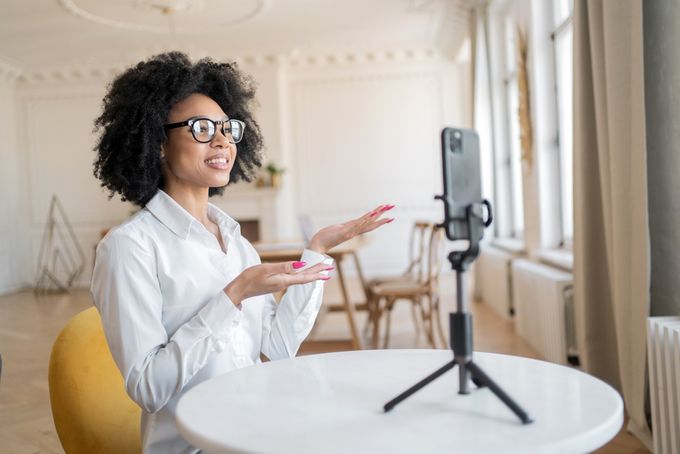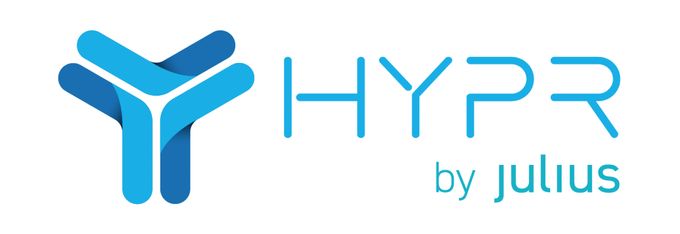Influencer Marketing Strategy for E-Commerce Stores Like Shopify
Published July 11, 2022

Influencer marketing focuses on using key figures, or influencers, to drive a message to a larger audience. These influencers can be bloggers, celebrities, or other social media users with a large following. By partnering with these influencers, brands can leverage their credibility and reach to spread a message or promote a product to a wider audience.
How to Launch an Influencer Marketing Campaign for E-Commerce
There are several reasons an e-commerce brand should use influencer marketing as a marketing strategy. For one, it’s a great way to reach new customers. Influencers have a large network of followers who trust their opinions and are likely to take their recommendations seriously.
Additionally, influencer marketing is cost-effective. Rather than spending money on traditional advertising methods, brands can partner with influencers to promote their products or services at a fraction of the cost.
So, how do you launch an influencer marketing campaign? Here are some tips to help you get started:
- Partner with the right influencers When choosing an influencer for e-commerce, businesses should look for someone relevant to their niche, understands the target audience, and has a following that is engaged and trustworthy. Ideally, aim to work with influencers who are great at creating engaging content and can help promote a company's products in a way that feels organic and authentic to their followers.
- Target micro-influencers When it comes to e-commerce, businesses should look for micro-influencers with a following of around 10,000–100,000 people. Micro-influencers often have niche interests and are experts in their field. This makes them a valuable asset for e-commerce businesses looking to create targeted content and reach new audiences.
- Determine the number of influencers The number of influencers you'll need for your e-commerce business will depend on the product scope. If you're selling a product with a broad appeal, you'll need fewer influencers than if you're selling a product with a more niche appeal. Typically, this will come down to budget.
How to Find Influencers for Your E-Commerce Store
While it’s true that influencer marketing is a fairly new phenomenon, it has seen rapid growth and the development of an entire digital ecosystem in a very short time. The result is a plethora of platforms that have fostered even faster growth and easier ways for online business owners to get involved in influencer marketing. Have a look below at a few of the best ways you can find e-commerce influencers for your own online store.
GRIN
GRIN is one of the most well-known influencer marketing software platforms for DTC (direct-to-consumer) brands. The platform gives you the power to not just discover the right influencer for your business, but also to manage all of your influencer relationships and campaigns, too! With more than 100 million influencers to choose from, you can see why GRIN is used by big names like MVMT and Butcher Box.
HYPR
HYPR is another top-notch influencer marketing platform that makes finding for the ‘right’ influencer an intuitive process. Search by demographic, geographic, and engagement audience data to discover top e-commerce influencers best fit to your business. As they write on their website, HYPR lets you “search by @handles, #hashtags, and 30,000+ topic categories on influencers or their audiences, from over 100 countries.”
Mavrck
If you’ve never heard of Mavrck, allow us to introduce you to the influencer marketing platform trusted by some of the biggest names in business including Kraft Heinz, Nike, and Hershey’s. At the same time, Mavrck offers an array of useful tools for smaller online businesses as well – tools like messaging templates for corresponding with influencers, filters for finding top influencers, content review, and report generating capabilities. Engage with macro and micro-influencers, advocates, referrers, and loyalists to take your influencer relationships beyond content creation.
Reach Out Directly
Have you come across a social media influencer that you vibe with? Found someone who you think could be a great promoter of your business and brand? So reach out to them! It probably won’t be the first time they’ve received direct correspondence from an online business owner like you, so just be ready to make them an offer if and when they respond to you. Be sure to familiarize yourself with their voice and style so you can sync up and get straight to marketing.
Your Audience (Yes, Really!)
Influencer marketing is made possible thanks to the openness of social media platforms. When there are no rules that determine who gets to have a huge number of followers, virtually anybody can turn out to be an e-commerce influencer – including the members of your own audience.
Testimonials
Moreover, your audience members don’t necessarily have to have an enormous audience of their own in order to act as a successful influencer for you. An authentic review of your business can go a long way to boost your bottom line. After all, anything can go viral these days. Don’t discount the power your audience has to help promote your brand.
Top Tip:
Even if you don’t seek to find influencers among your audience members, you can ask your audience which influencers they follow. You can also send them surveys to see where they spend their social media time, what sorts of people they interact with on social media, the types of messaging they respond best to, and so on.
How to Choose the Perfect E-Commerce Influencer Platform
There are plenty of factors that you should consider when you’re on the prowl for the e-commerce influencer that will help take your business to new heights. Here are a few questions to ask yourself when searching for the ‘perfect’ influencer:
- Where do your audience members spend their social media time?
- Which platforms are they most active on?
- How do they engage on those platforms?
- What are your goals for launching an influencer marketing campaign?
- Are you looking to build brand awareness?
- Do you want to generate more site traffic?
- How do they use platforms like Instagram to boost conversions?
Those questions will help you determine which platforms to search for influencers on, and will also serve to help narrow down the enormous selection of influencers to those that best meet your business’s needs.
Have a look at the stats below to get a general idea of which social media platform is ideal for your influencer marketing strategy.
- The majority (32.4%) of Facebook’s audience is aged 25-34
- 1/3 Americans aged 12-34 say Facebook is their main social media platform
- Roughly 80% of Facebook users access the platform on mobile device only
- More people get their news from Facebook than any other social media platform
- Almost 20% of Americans made a purchase on Facebook in the past year
- The majority (33%) of Instagram’s audience is aged 25-34
- 27% of Americans aged 12-34 say Instagram is their main social media platform
- Instagram ranks 4th on the list of apps with most users
- Nearly 90% of Instagram users are outside of the United States
- Time spent on Instagram grew nearly 14% from 2019 to 2020
TikTok
- TikTok ranks 7th on the list of most-used social media platforms
- Roughly half (the largest portion) of all TikTok users are age 29 or under
- 1/3 top-performing ads on TikTok break the 4th wall (speak directly to the audience)
- TikTok’s number of monthly users in the US grew 800% between 2018 and 2020
YouTube
- More than 70% of YouTube watch time is done on mobile devices
- Americans ages 18-34 watch more YouTube than any TV network
- YouTube is the most widely used social platform among US adults (more than Facebook!)
- One in three Baby Boomers have turned to YouTube for more info on a product or service
- 80% of US parents with children aged 11 or under say their kids use YouTube
- Roughly 20% of Twitter users are based in the US
- The largest percentage of Twitter users are aged 25-34 years old
- Only 5% of Twitter users say it’s their #1 social media platform
- Twitter ad engagements increased 35% year over year in Q4 of 2020
5 Awesome Influencer Marketing Examples
There’s certainly no shortage of influencer marketing examples—whether it’s the top e-commerce agencies or smaller online businesses; whether it’s with the help of influencer marketing platforms or through direct outreach; whether it’s on Facebook, Instagram, YouTube, or any other social media platform. The sheer abundance of influencers proves that this form of online marketing isn’t going anywhere soon.
If you’re still not entirely convinced, have a look at the following influencer marketing examples from some of the most notable names in e-commerce.
1. Warby Parker
In case you’ve never heard of them, Warby Parker is one of the biggest names in D2C e-commerce, selling fashionable eyewear at affordable prices. Warby Parker adopted the influencer marketing tactic in full spirit, even dedicating a landing page on their website to their “special customers” – check out Wearing Warby.
2. Dollar Shave Club
Another huge name in online retail, Dollar Shave Club is a subscription-based service that provides grooming products by mail. They also saw the great opportunity presented by influencer marketing, and so they partnered up with an influencer marketplace called ACTIVATE to give their brand a boost across social media. The results?
- More than 4.6 million impressions on social media channels
- 10.3 thousand clicks
- An average Instagram engagement rate of more than 6%
- Roughly 20% consideration comments on Instagram
3. Casper
Need a good night’s sleep? Casper is a D2C brand that primarily sells mattresses, but offers a range of other related goods such as pillows, linens, and so on. As you may imagine, people are often picky about the mattresses they buy, and usually want to feel them before purchasing. Casper ingeniously employed influencers to earn more credibility among their audience across social media and combined that marketing strategy with an all-star guarantee policy that removes all fear and doubt from the customer’s mind.
4. BarkBox
“A monthly subscription service providing dog products, services, and experiences”, BarkBox turned primarily to YouTube to find the type of influencers they felt would help build up their brand the best. They partnered with gamers, make-up artists, and more – each of whom recorded heartwarming videos of unboxing all of the goodies for their furry friends delivered by BarkBox. You can see some of those unboxing videos here (be ready to smile).
5. MVMT
MVMT is best-known for its watches, but they’re also popular for their eyewear and other accessories. Popular as they are, they didn’t get to their level of notoriety by chance. MVMT also teamed up with an influencer marketing agency called GRIN (mentioned above) to increase its brand awareness. Here’s what they got in return:
- 100 thousand conversions using affiliate codes
- Nearly 40 thousand pieces of influencer content created
- 91% increase in engagement
- 63% increase in conversions
Bonus: Ocean Spray/Skateboard TikTok Video
While Ocean Spray is not an e-commerce brand, it’s still worth mentioning the astronomical level of engagement they received off of one impromptu TikTok video. Check out the viral video here of the man-turned-internet-star skateboarding with a bottle of their cranberry juice in hand. Ocean Spray’s CEO Tom Hayes was quoted as saying they had “about 15 billion media impressions” from that single video. While he couldn’t cite any specific results, Hayes did say that “retailers say there is an additional draw off the shelf, particularly with cran-raspberry” – the variety of juice shown in the video.
Become Influential
These are just a few examples that prove how even some of the bigger names in e-commerce recognize how influencer marketing increases sales, brand recognition, and social media engagement. There are plenty of ways that smaller businesses like yours can adopt e-commerce influencer marketing into a broader e-commerce advertising strategy – and there’s no rush to jump all in. It will take some trial and error to suss out what works best for your business, but don’t let a bumpy road stop you from arriving where you want to be.
Want to read more? Then check out our post on the difference between digital marketing and e-commerce.










